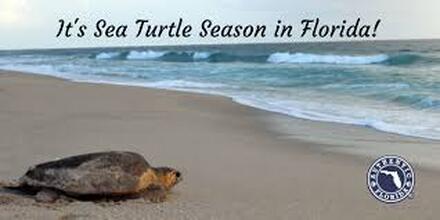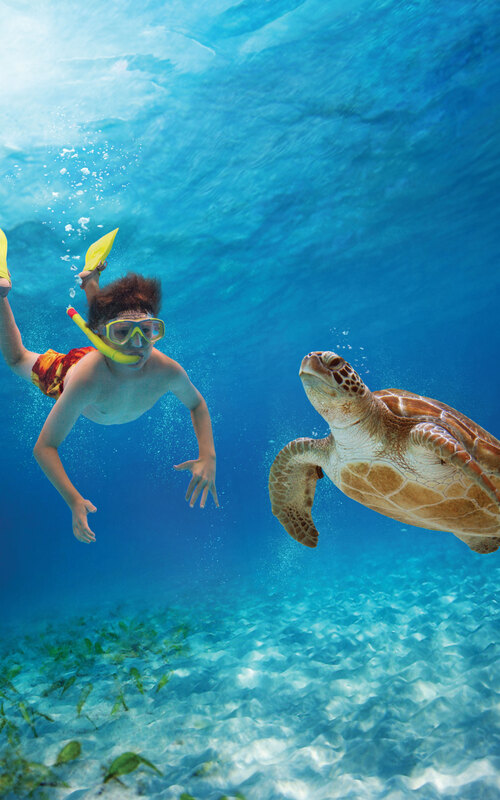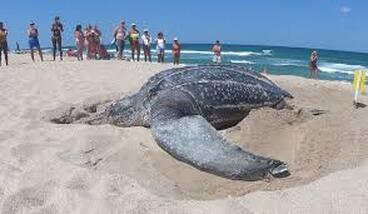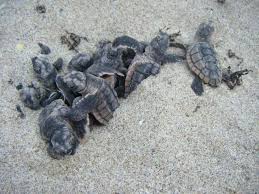|
Hear this here: I-95 Exit 25 in FL To: FL 84, Marina Mile Boulevard Earth, wind, and fire. Since it was recently Earth Day, as we drive through the tropical breezes toward the Fort Lauderdale Airport, we will discuss another element that is equally important to the area’s thriving economy, namely the proximity of the ocean to a booming city. And as for fire, well we are discussing some local stars -- stars that attract a lot of tourism to the beaches even at night. Sensitive creatures from the sea often collide with humans on Fort Lauderdale’s coastlines. So the tourist city tries hard to accommodate all visitors. Increasingly, the interactions between rare sea turtles and people are not harmful -- thanks to enlightened policies of both beachgoers and the local government. Snorkelers who often encounter turtles in the ocean know not to harass and just watch these gentle giants. When they drag themselves on to the beach to lay eggs, Leatherback sea turtles are the biggest and can weigh 500 pounds and look like small cars emerging from the surf. When the baby leatherbacks emerge from the sand to return to the sea, they are teeny replicas of their giant Moms, and if not protected are a tasty morsel for raccoons or seagulls who would prey on them. This is one reason people are stepping up to protect these very rare reptiles. Volunteers can even participate in conservation efforts. Accredited groups organize watches and walks along the beaches here. So you can actually stay up late or get up early to monitor mother Turtles laying eggs and then mark off the sites so beach goers do not tread on the nesting site. Weeks later you may be able to witness the tiny babies emerge from the sand and make their way back to the water. So if you are interested in volunteer opportunities, visit Broward County's Sea Turtle webpage. Chances are you will witness turtles during the right time of year. According to the City of Fort Lauderdale’s website and the Florida’s Department of Fish and Wildlife Conservation Commission: “The Florida coast is the second most popular nesting area in the world for Loggerhead Sea Turtles. Nesting season in Broward County and on Fort Lauderdale's beaches begins in early March with Leatherbacks, followed by Loggerheads in April, and Green Sea Turtles in May and June. Females come up from the water to make their nests and deposit over 100 eggs on average in the sand. Approximately six to eight weeks later, the hatchlings will make their way from those nests to the ocean using the reflection of the moon on the water as a guide. Therefore, a common threat to sea turtles is disorientation caused by other sources of light. The City of Fort Lauderdale has adopted laws in its Code of Ordinances to help protect sea turtles that nest and hatch on the beach. This ordinance is designed to reduce the impact of artificial lighting on sea turtles by restricting it during both the nesting and hatching season (March 1 - October 31)." “The City works diligently to map sea turtle nests, set up protective barriers where necessary, post lighting guidelines and to support night walks to watch over hatchlings as they make their way to the water. We also rake our beaches each day, capturing debris such as cigarette butts and plastic items which can be harmful to sea turtles and all marine wildlife. There is a lot that our neighbors can do to keep these lovely stars of our seas healthy and happy in our City.” #BrowardCounty #Seaturtles #Earthday #FortLauderdale #Loggerheads #NatGeo #CityofFortLauderdale #Florida #Snorkel
0 Comments
Leave a Reply. |












